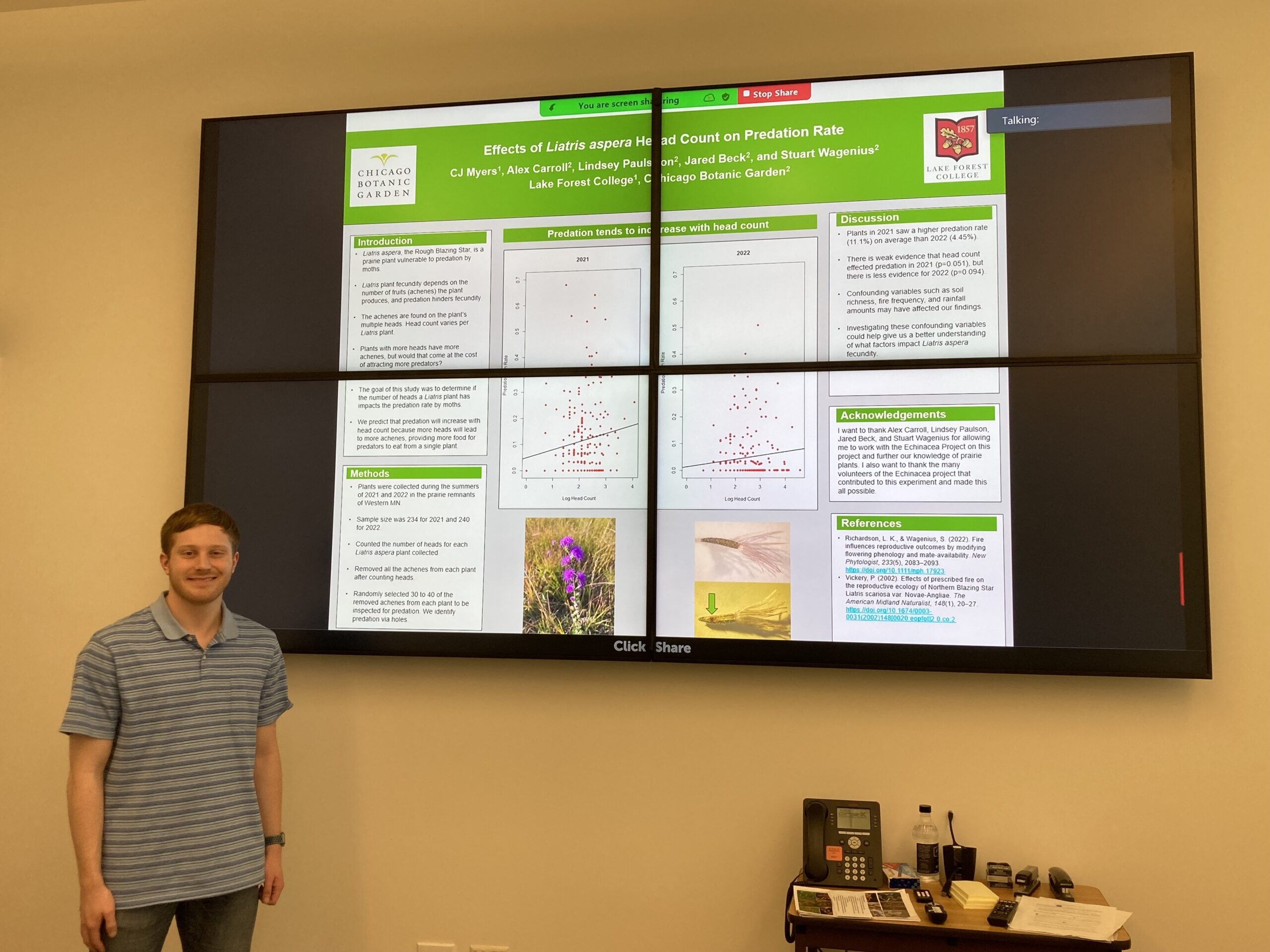
It has been an absolute pleasure getting to work on this project. After many weeks of hard work, I presented the final poster I made, going over the details and findings of everything we did to learn about how Liatris head count affects predation. We did find some evidence that there is an effect on predation rate based on headcount, but the evidence itself was not strong enough. We did fail to reject the null hypothesis, but that did not discourage me from thinking about other things that could have impacted the results we found. I mentioned that confounding variables such as soil richness, fires, and rainfall may have affected our results, especially given the differences found between 2021 and 2022. These confounding variables are worth looking at, making me curious to learn more about how they influence Liatris.
With that, there is so much to learn still, and it does not only apply to Liatris. Other prairie plants, such as the Big Bluestem (Andropogon gerardii) and Milkweed (Asclepias viridiflora), are being looked at by the Echinacea Project, and there is so much to learn about them. Keep up the excellent work with what you do, and most importantly, keep learning how to protect our precious prairie ecosystems and plant species. You are their only hope!
Lastly, I enjoyed getting to know all of you and learned a lot while I was here. Conservation science has been something I have always been interested in, so having the opportunity to research prairie plants was something special. I want to thank Stuart Wagenius, in particular, for letting me intern here and learn the ways of scientific research in a professional setting. I look forward to hearing what comes next from the project, and I sincerely thank you!

Leave a Reply